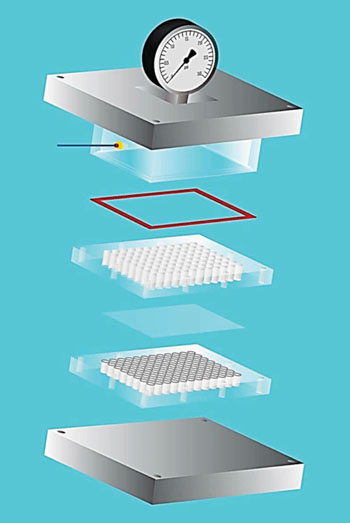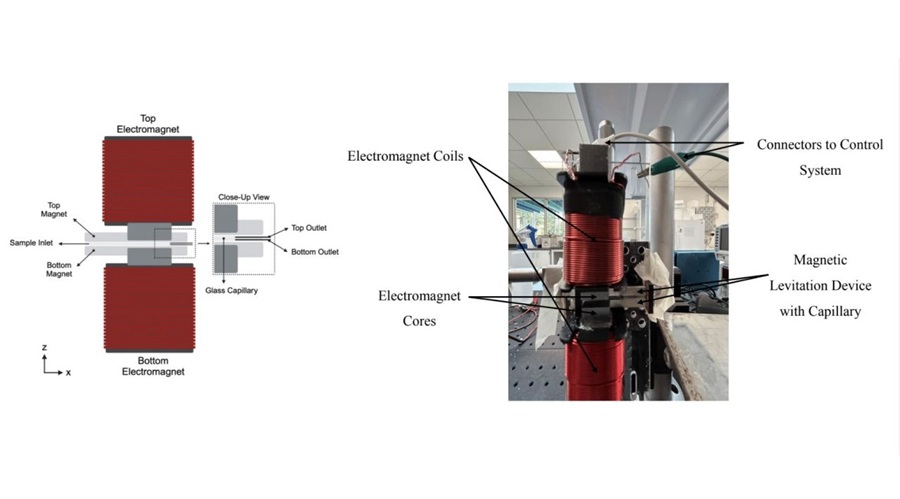New Method Designed to Screen Cancer Cells
By LabMedica International staff writers
Posted on 15 Dec 2015
A screening method has been developed that utilizes viscoelastic characteristics to classify many more different types of cancer cells and that could ultimately lead to better treatments for a variety of other diseases.Posted on 15 Dec 2015
The method called parallel microfiltration may also have broader applications, including the ability to screen molecules that can alter particular genes and protein levels inside a cell, which could be useful in treating cancer, diabetes, malaria and other diseases.

Image: Schematic illustration of the components of the parallel microfiltration system (Photo courtesy of University of California).
Scientists at the University of California – Los Angeles (UCLA; CA, USA) placed a mixture of cells and liquid on a porous membrane, and applied air pressure to force the mixture down through tiny pores that have a smaller circumference than the cells. Stiffer cells block the pores so that not much liquid can filter through; for squishier cells, more of the cell-and-liquid mixture passes through. The scientists can use parallel microfiltration to test many different small molecules at once by measuring the filtration of fluid into individual compartments.
The team found that drug-resistant human ovarian cancer cells are softer than their drug-sensitive counterparts, and that more-invasive cancer cells are softer than less-invasive ones. In future studies, the investigators hope to establish whether squishier cancer cells are in fact more harmful than stiffer cancer cells, and whether their softness can be reversed.
Amy C. Rowat, PhD, the lead author of the study, said, “We want to screen cells based on their squishiness or stiffness. We created a technology to probe the deformability of hundreds of cell samples at the same time, so we can identify compounds that make the cells stiffer. Our hope is that we can identify new compounds that can help to prevent the spread of cancer.” The study was published on December 2, 2015, in the journal Scientific Reports.
Related Links:
University of California – Los Angeles














